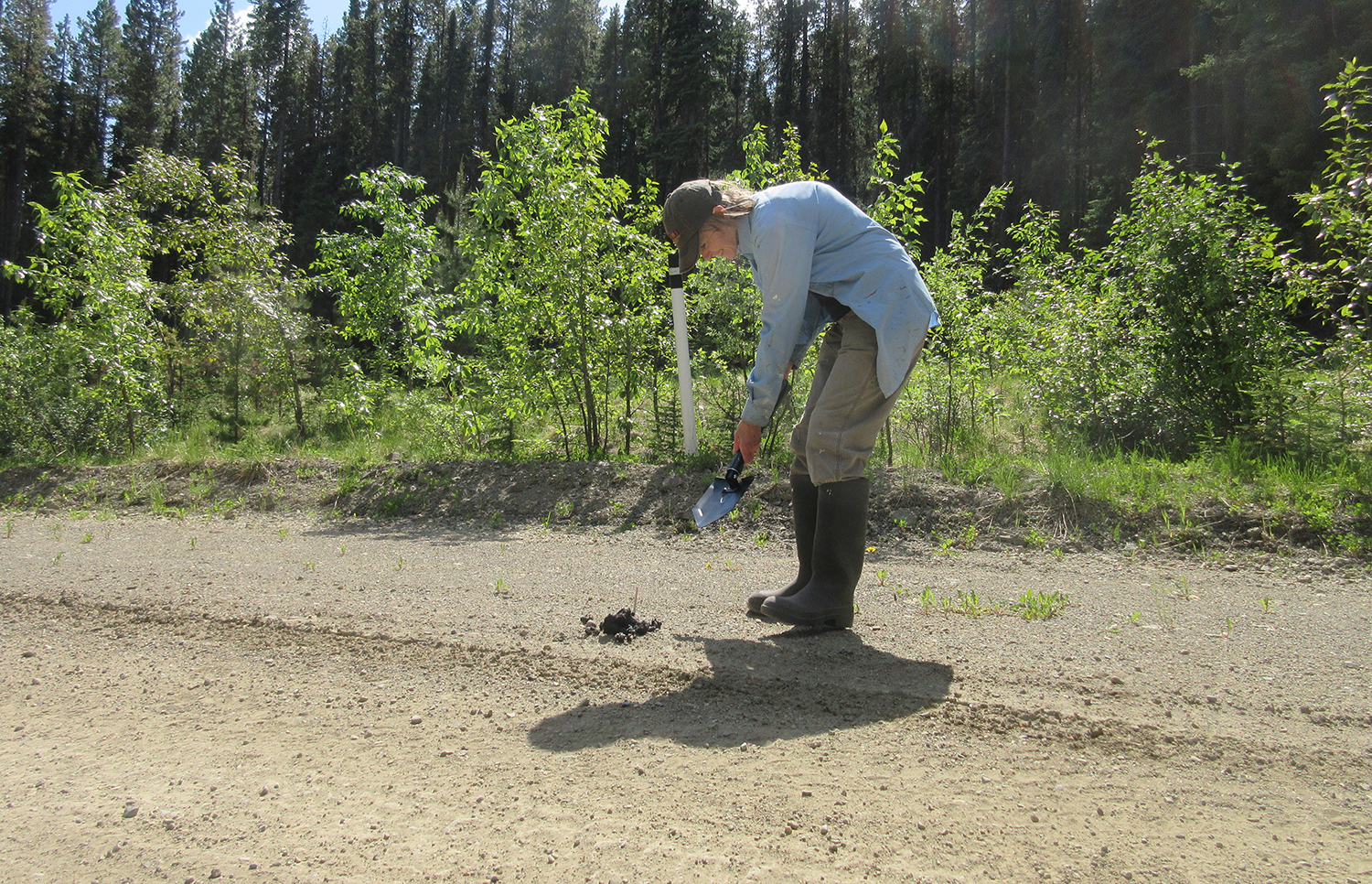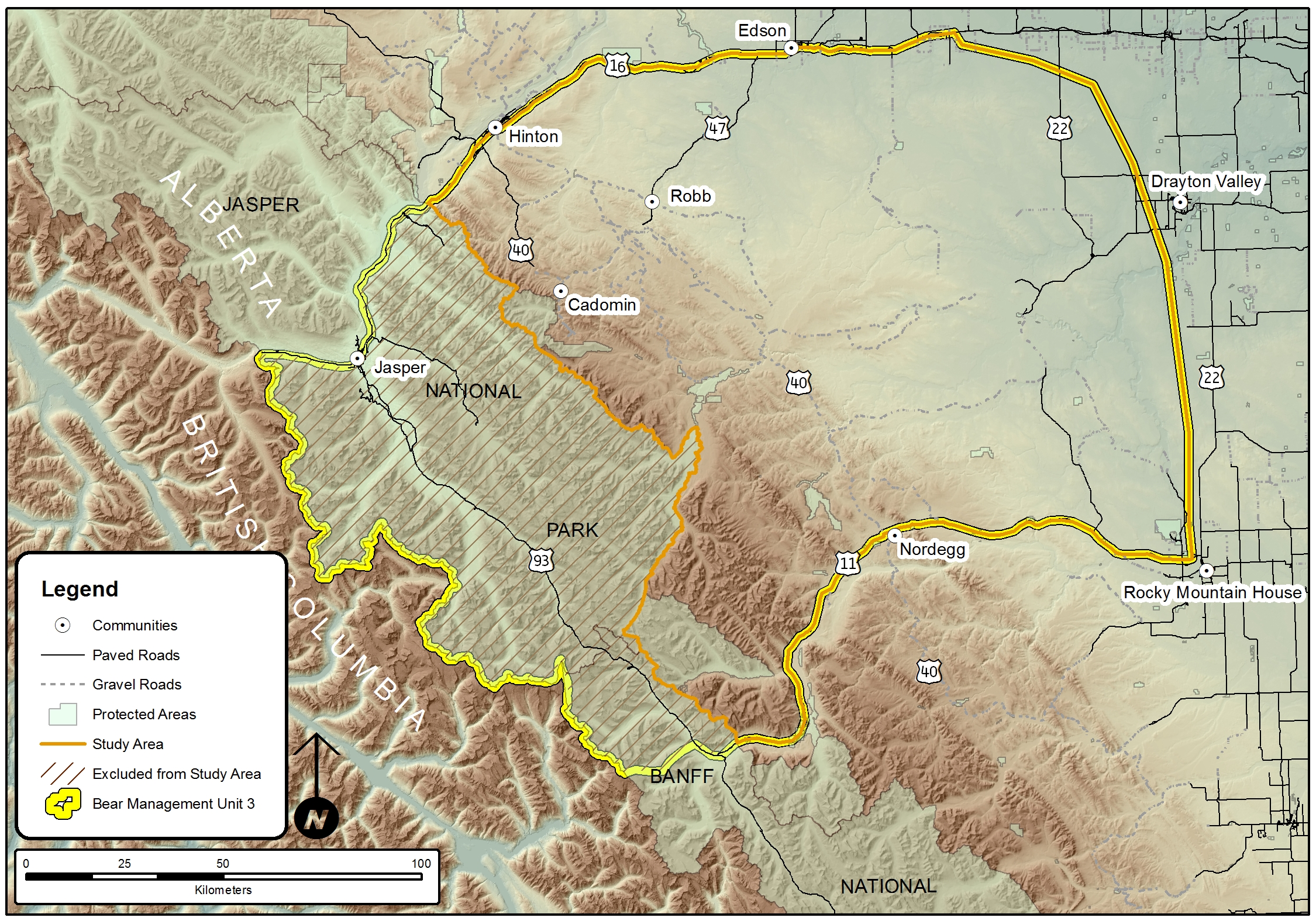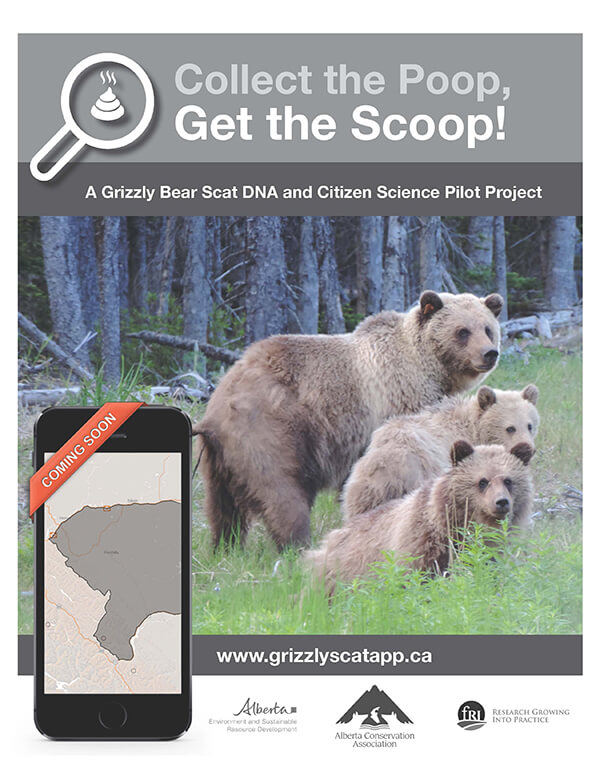
Abstract
Wildlife managers conduct population inventories to monitor species, particularly those at-risk. Although costly and time consuming, grid-based DNA hair-snag sampling has been the standard protocol for grizzly bear inventories in North America, while opportunistic fecal DNA sampling is more commonly used in Europe. Our aim is to determine if low-cost, low-effort scat sampling along roads can replace the current standard. We compare two genetic non-invasive techniques using concurrent sampling within the same grid system and spatially explicit capture-recapture. We found that given our methodology and the present status of fecal genotyping for grizzly bears, scat sampling along roads cannot replace hair sampling to estimate population size in low-density areas. Hair sampling identified the majority of individual grizzly bears, with a higher success rate of individuals identified from grizzly bear samples (100%) compared to scat sampling (14%). Using scat DNA to supplement hair data did not change population estimates, but it did improve estimate precision. Scat samples had higher success identifying species (98%) compared with hair (80%). Scat sampling detected grizzly bears in grid cells where hair sampling showed non-detection, with almost twice the number of cells indicating grizzly bear presence. Based on our methods and projected expenses for future implementation, we estimated an approximate 30% cost reduction for sampling scat relative to hair. Our research explores the application of genetic non-invasive approaches to monitor bear populations. We recommend wildlife managers continue to use hair-snag sampling as the primary method for DNA inventories, while employing scat sampling as supplemental to increase estimate precision. Scat sampling may better indicate presence of bear species through greater numbers and spatial distribution of detections, if sampling is systematic across the entire area of interest. Our findings speak to the management of other species and regions, and contribute to ongoing advances of monitoring wildlife populations.
Citation
Phoebus, I., Boulanger, J., Eiken, H. G., Fløystad, I., Graham, K., Hagen, S. B., Sorensen, A., & Stenhouse, G. (2020). Comparison of grizzly bear hair-snag and scat sampling along roads to inform wildlife population monitoring. Wildlife Biology, 2020(3). doi:10.2981/wlb.00697









